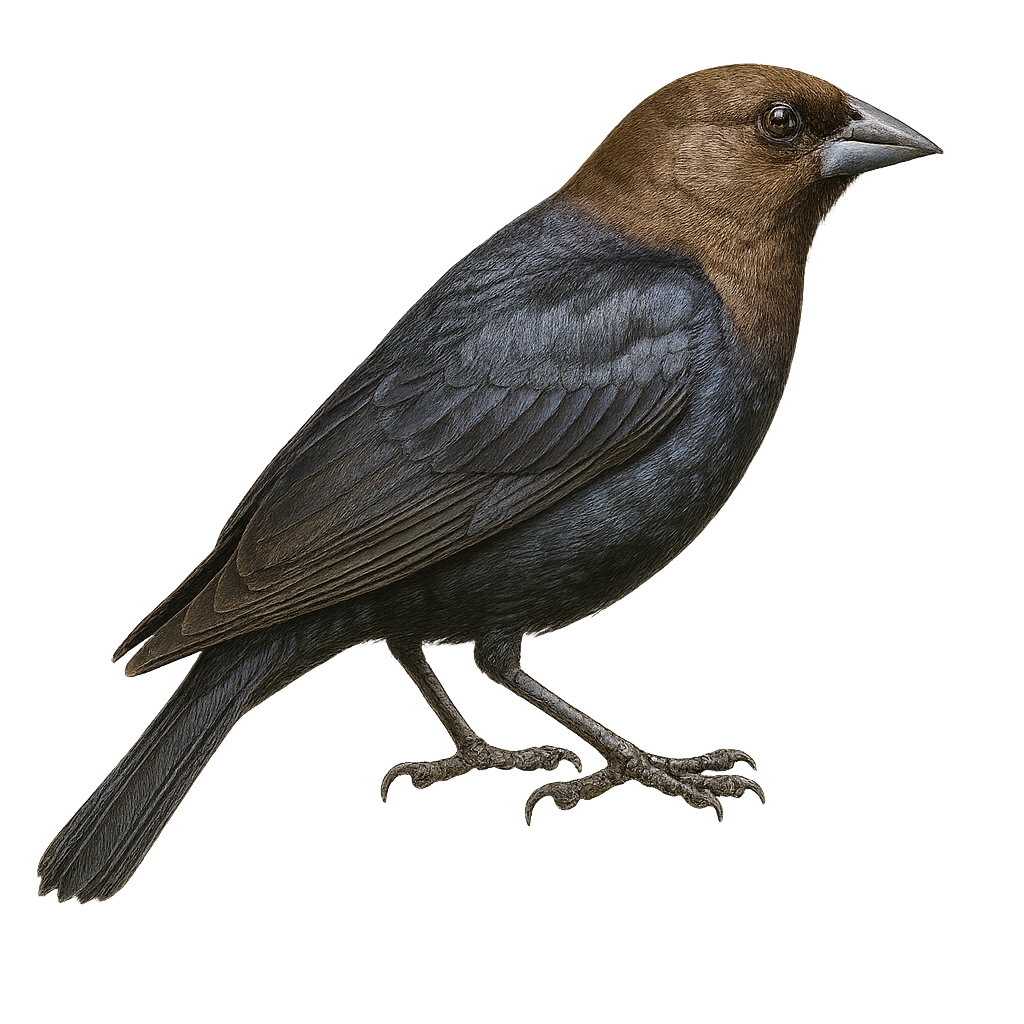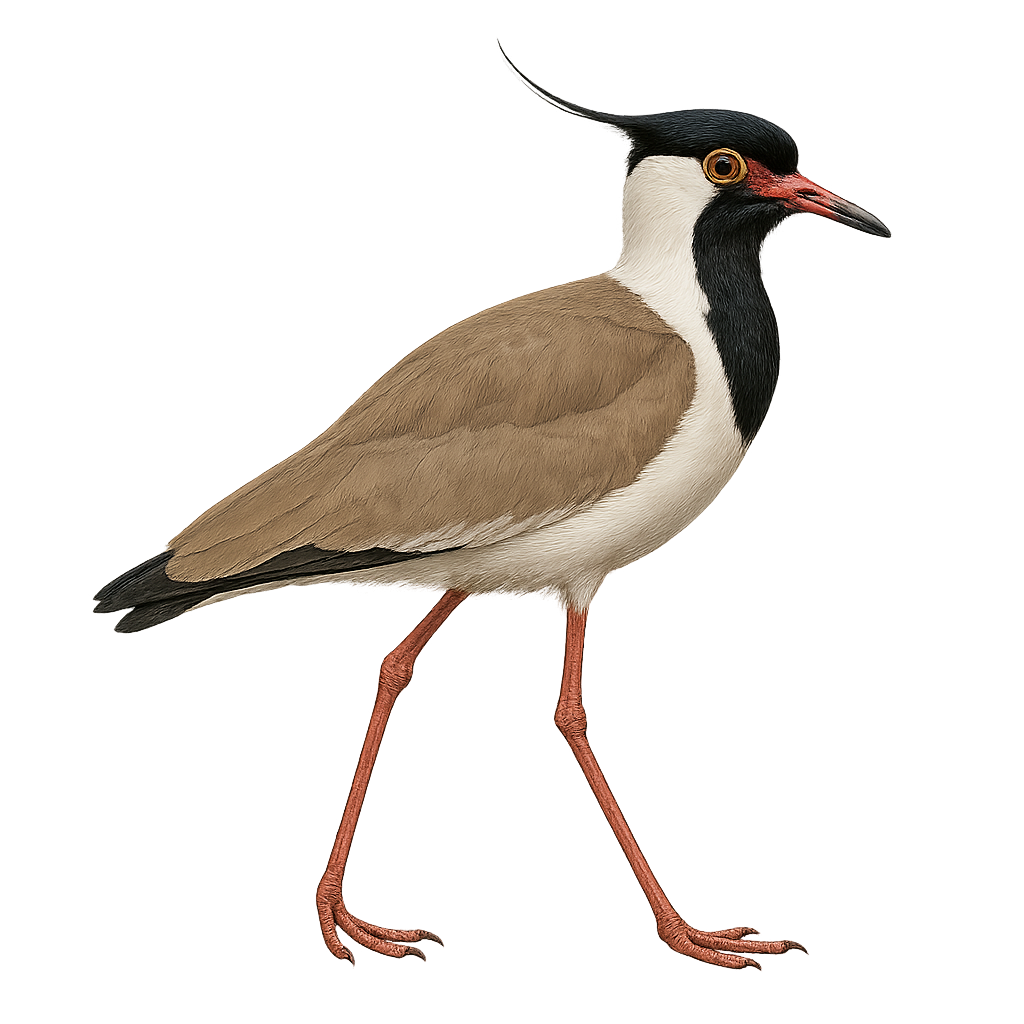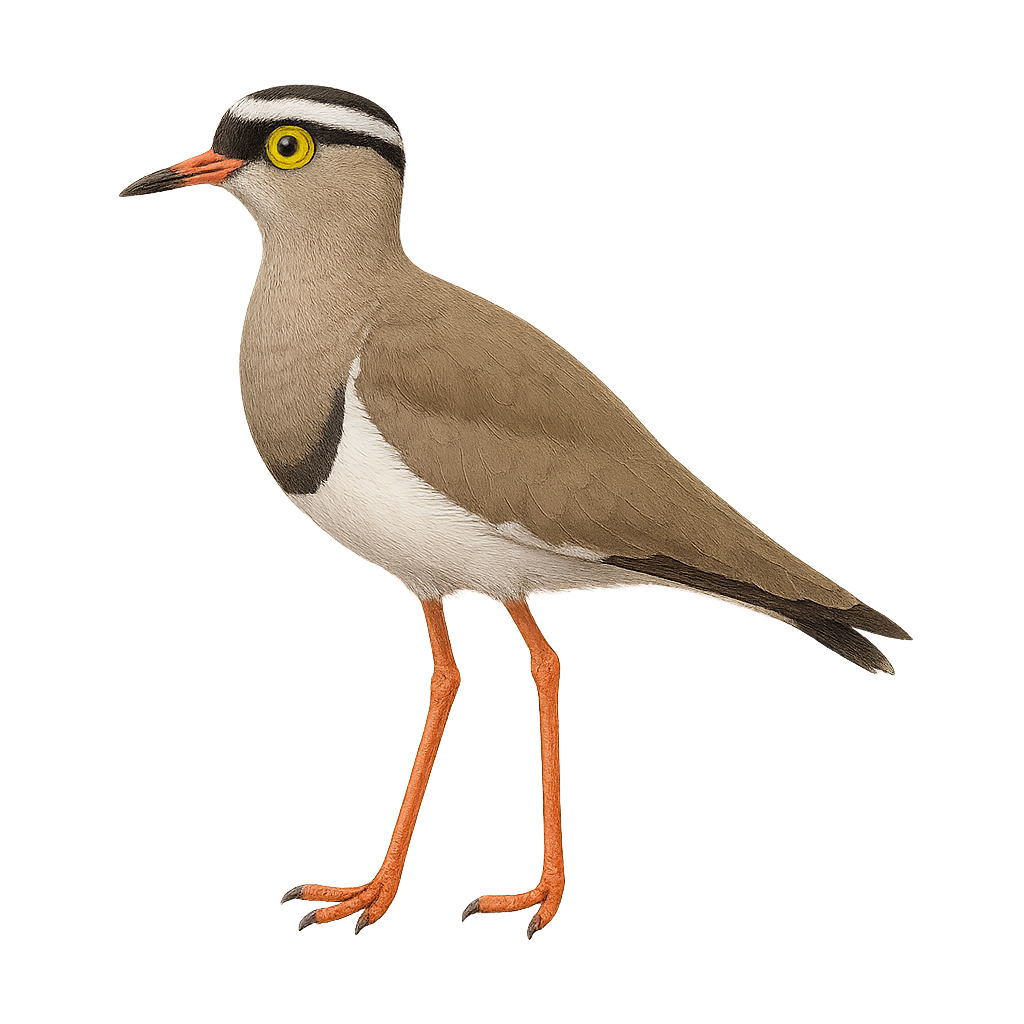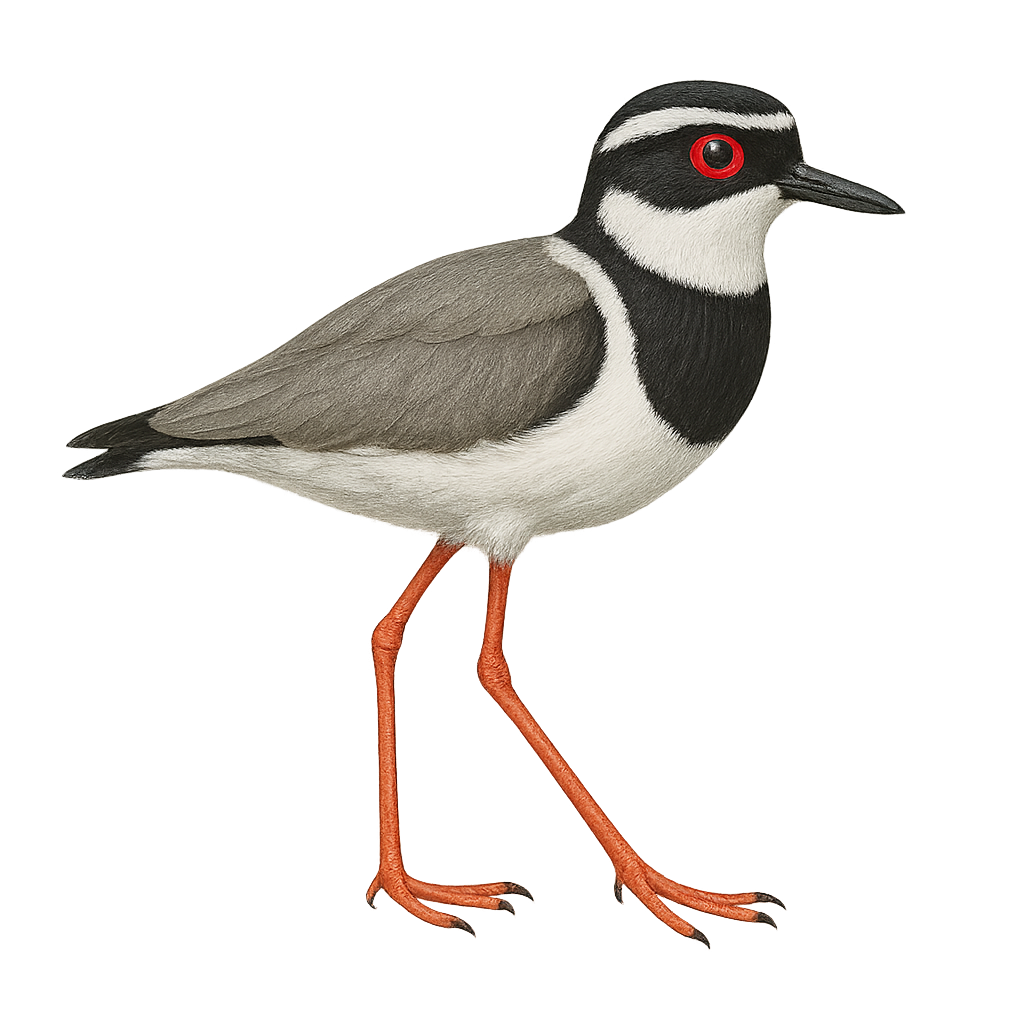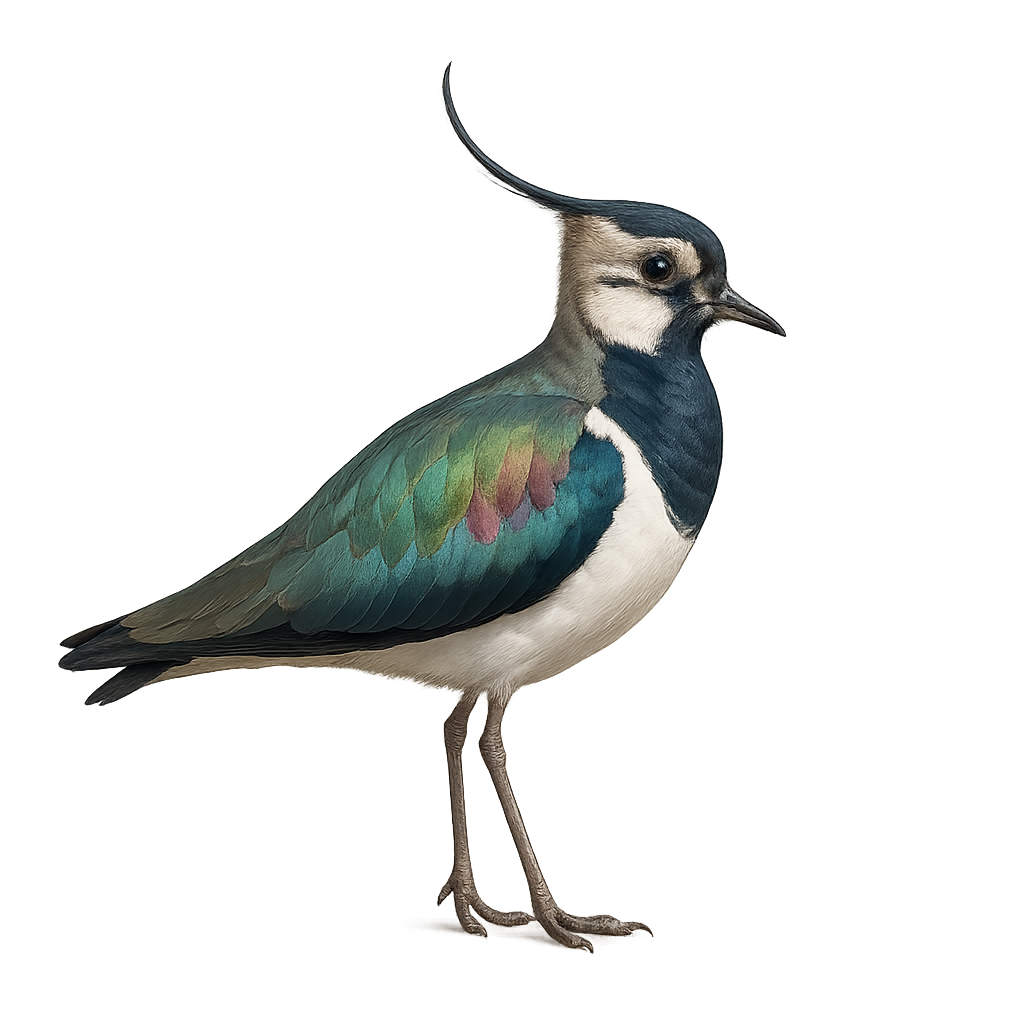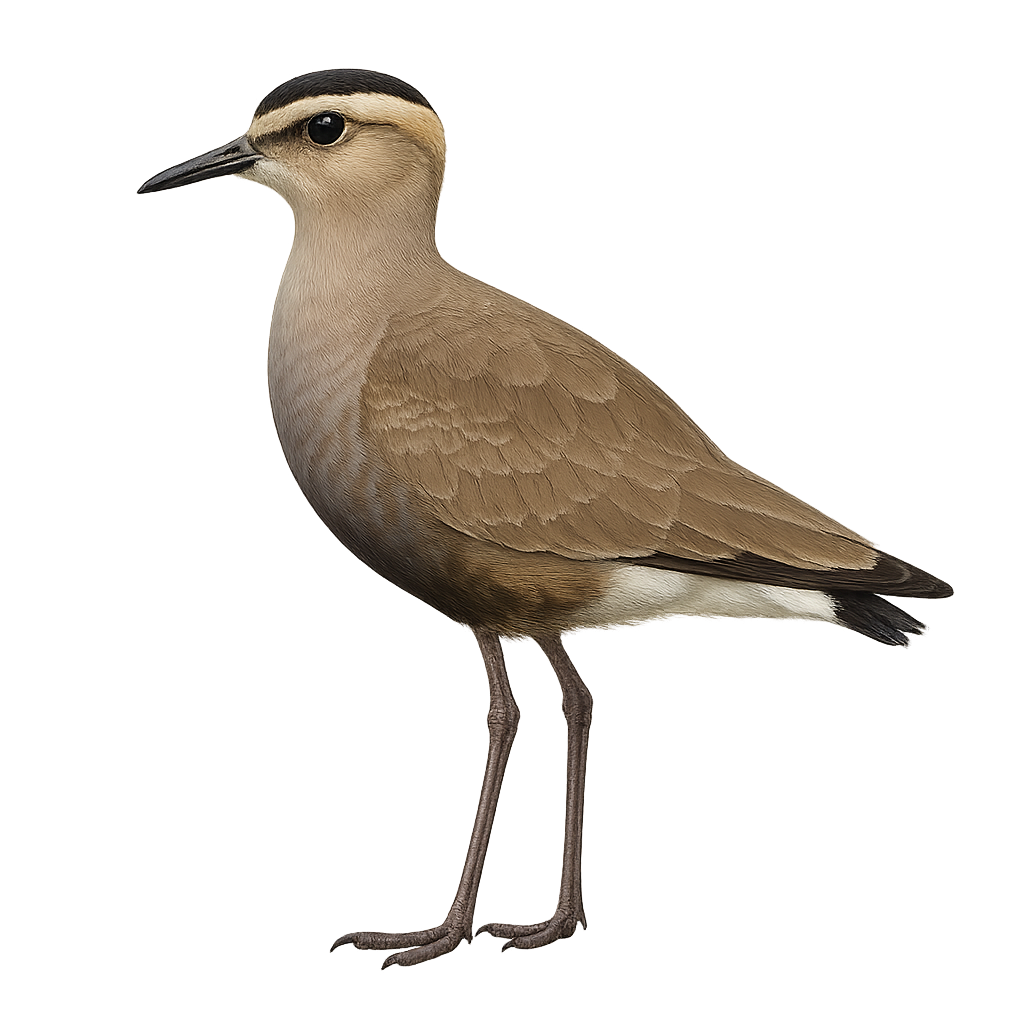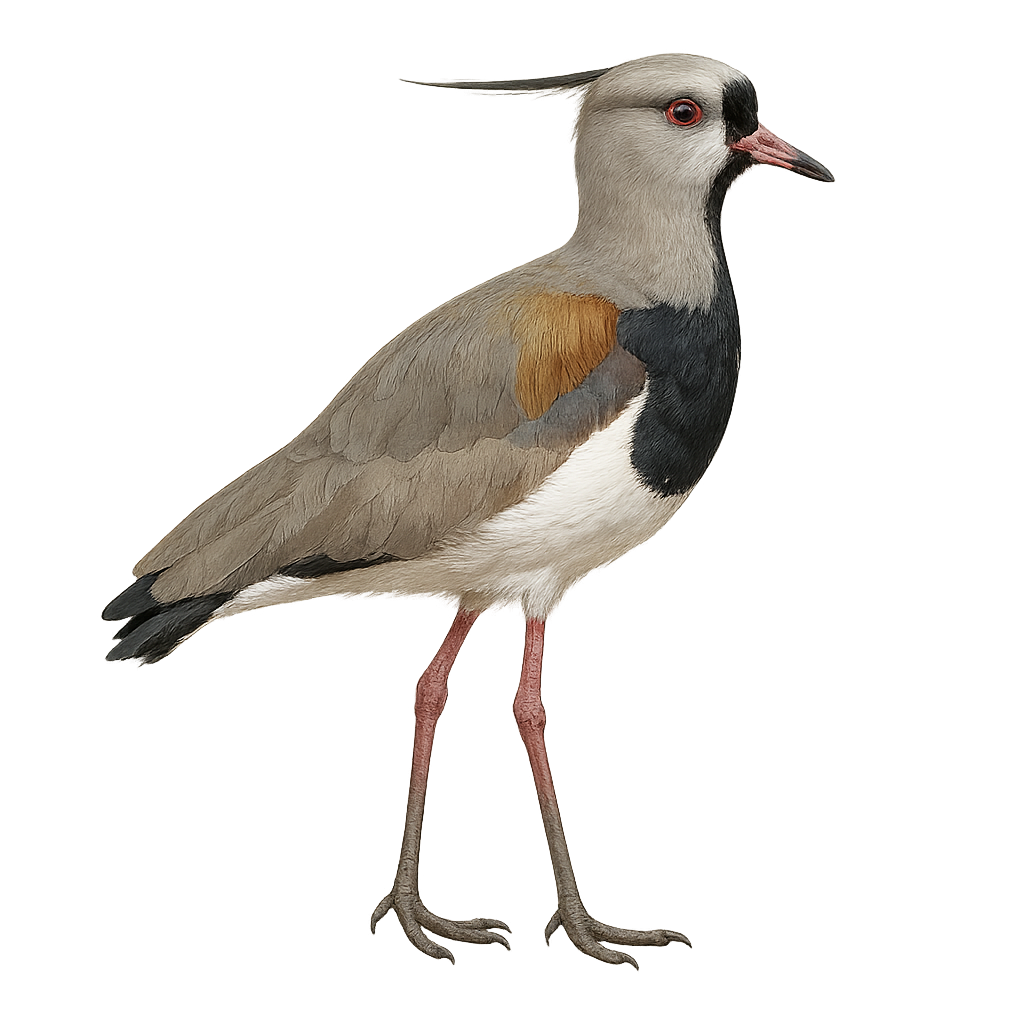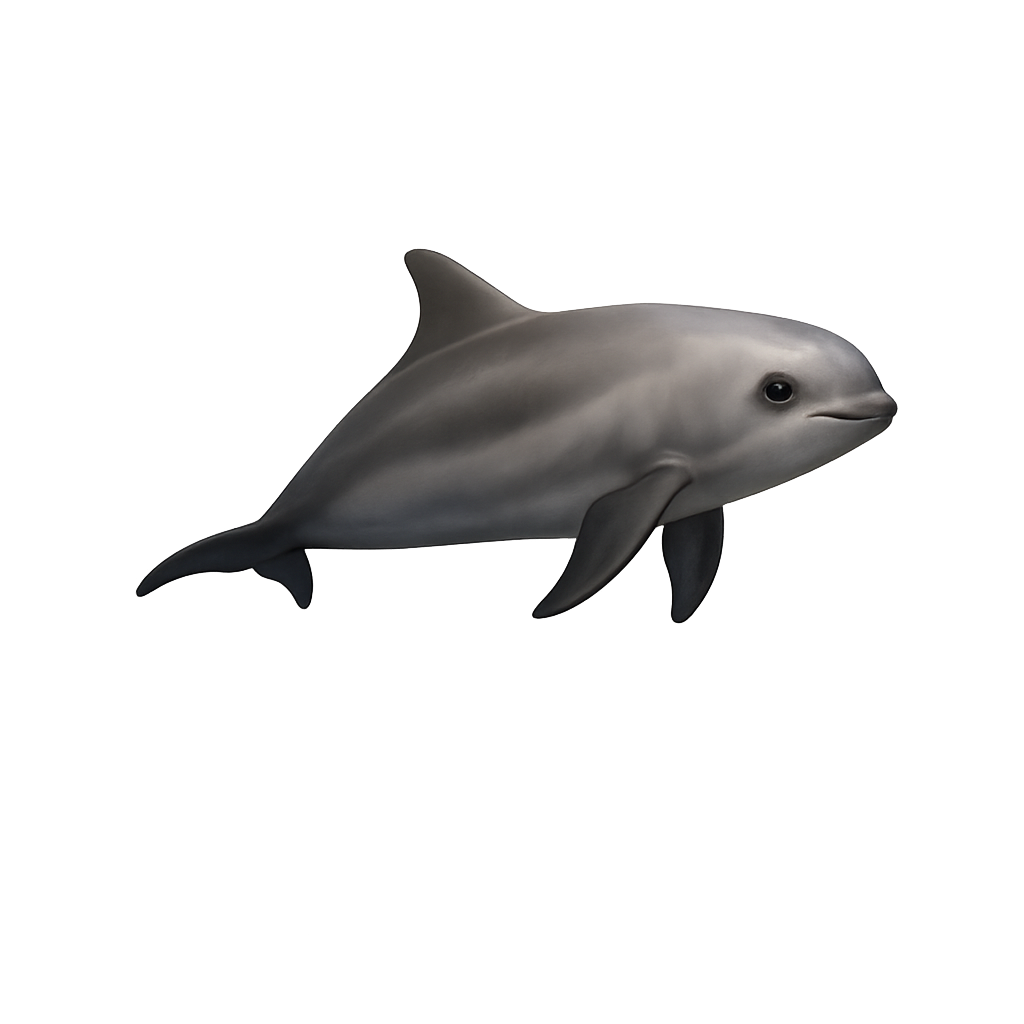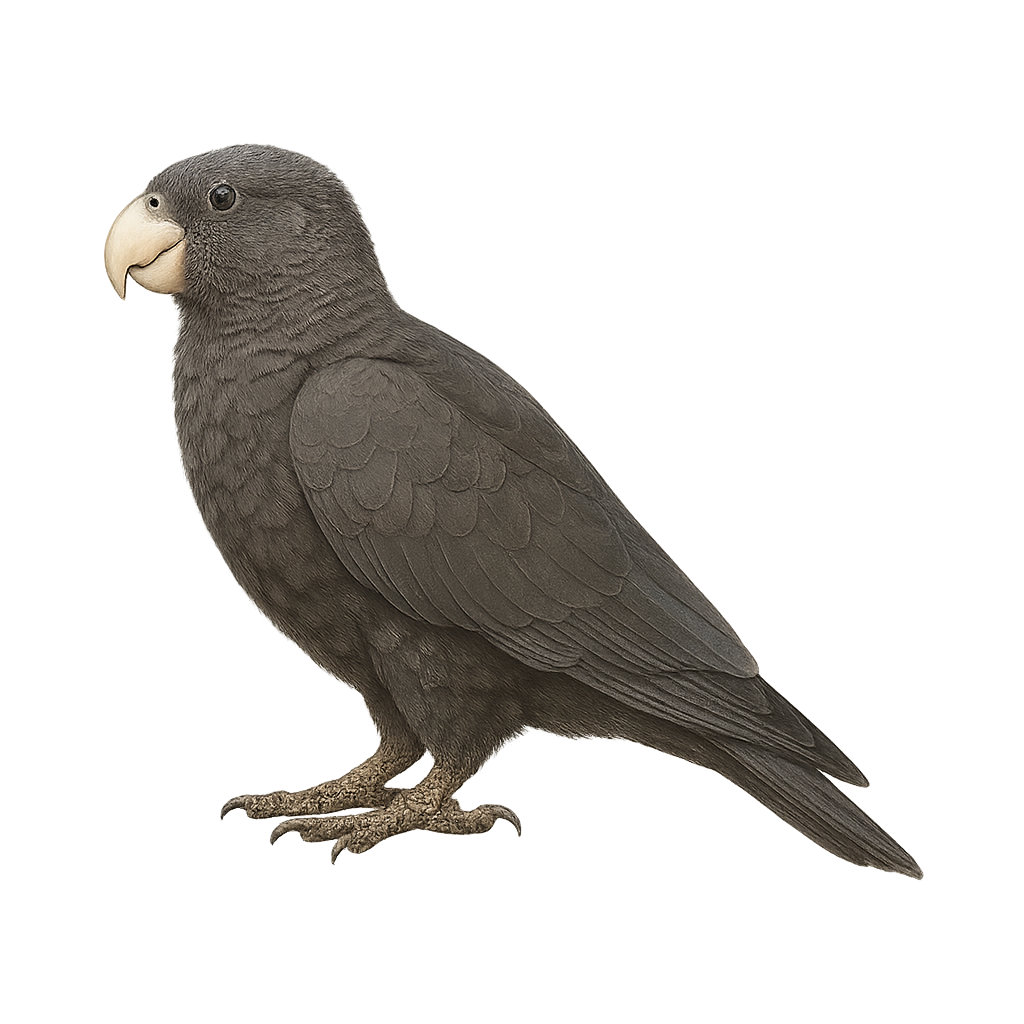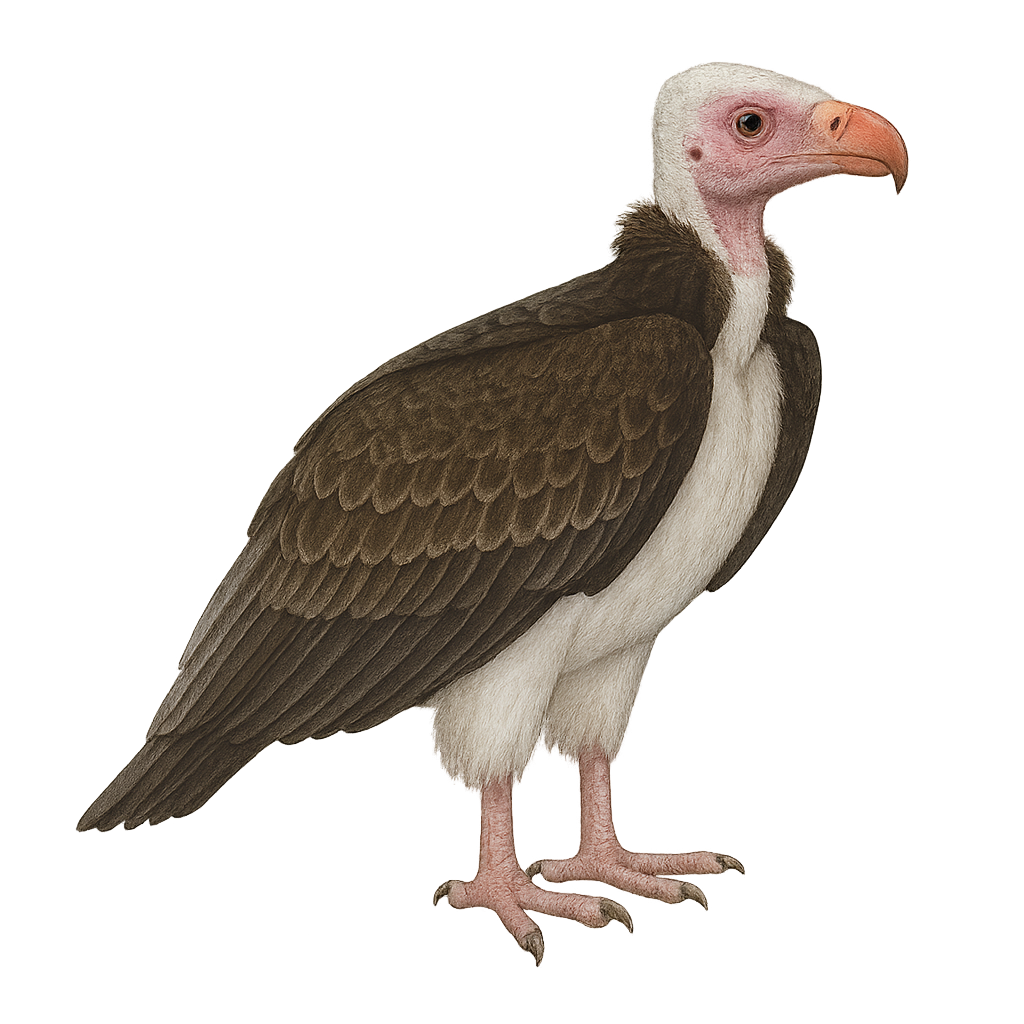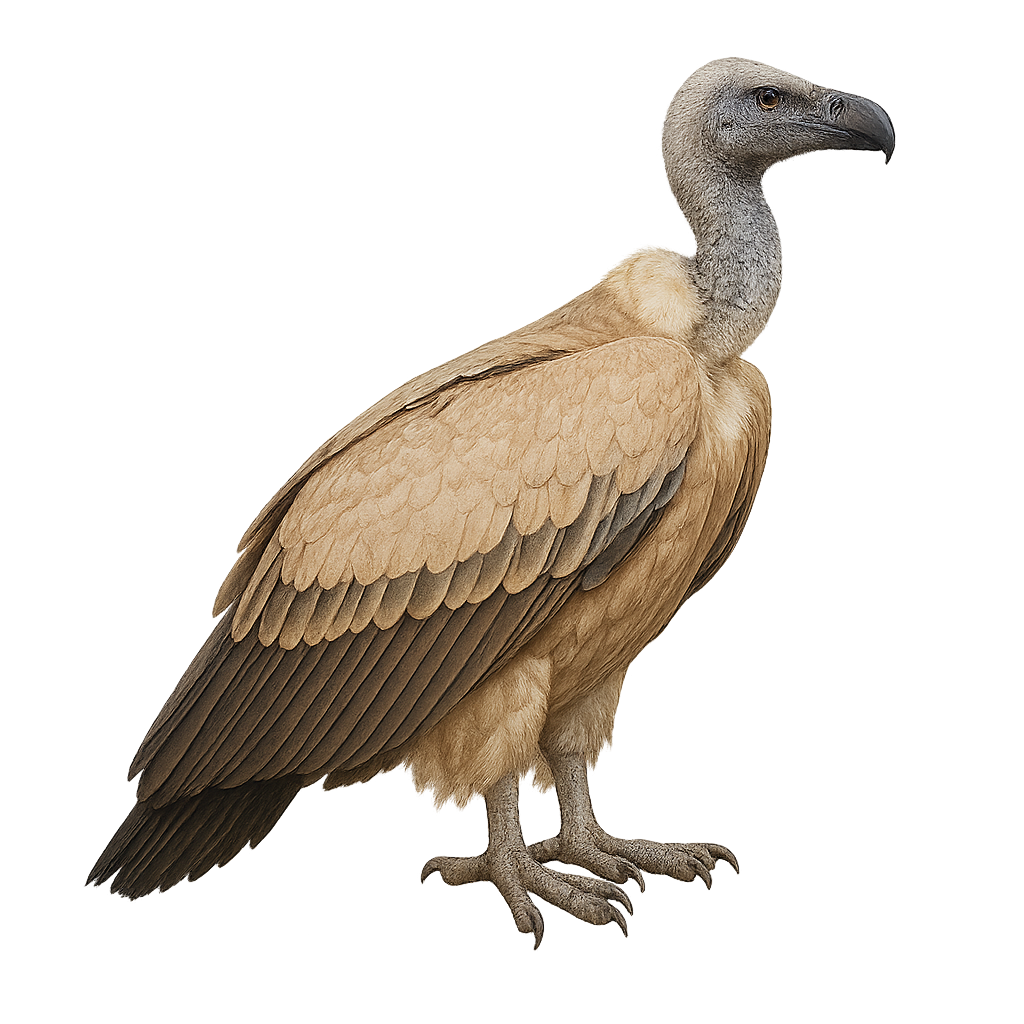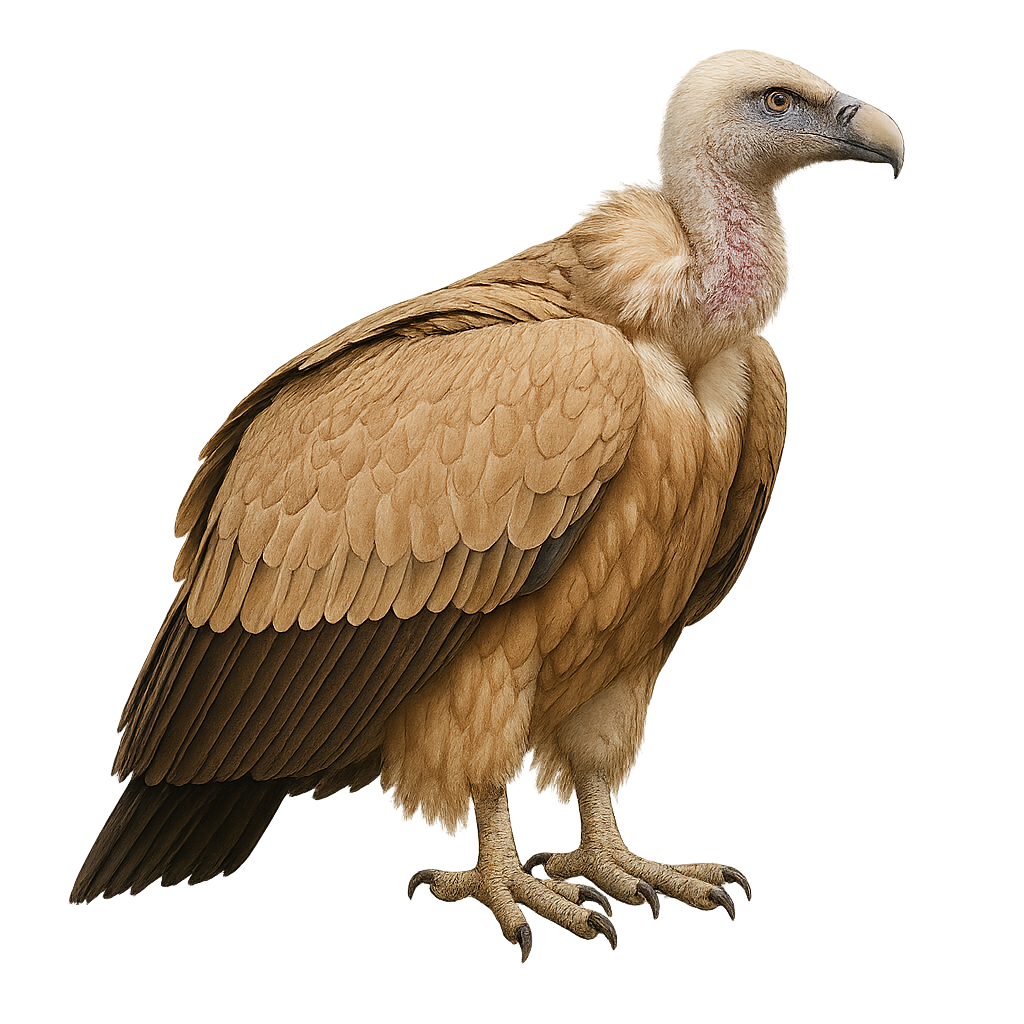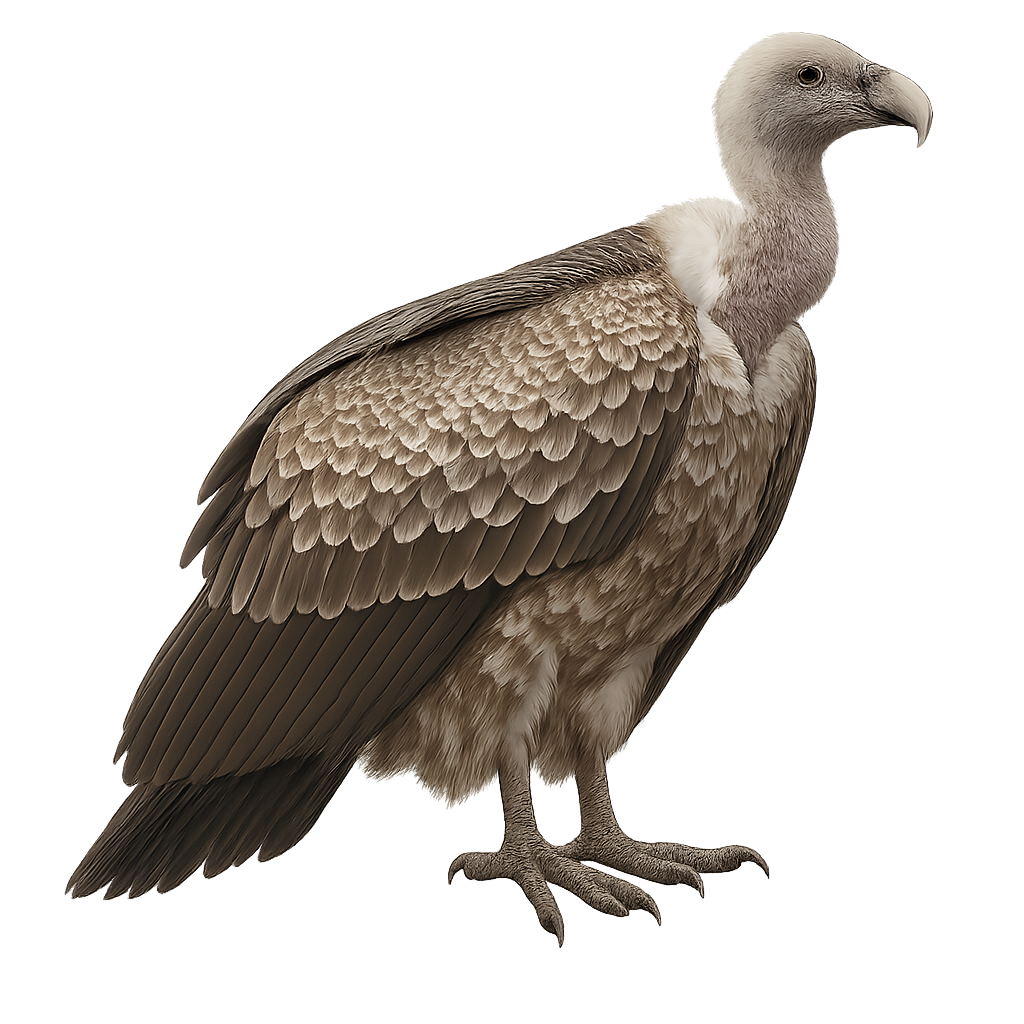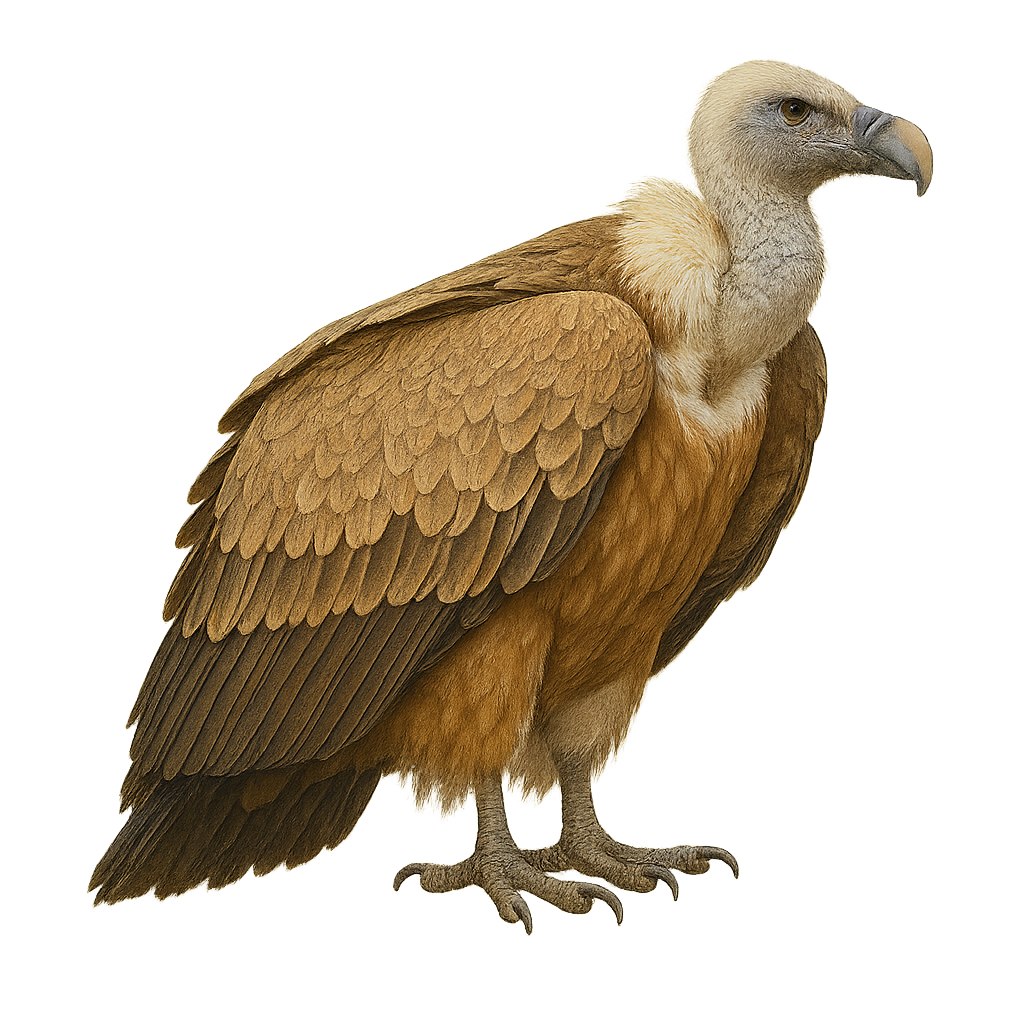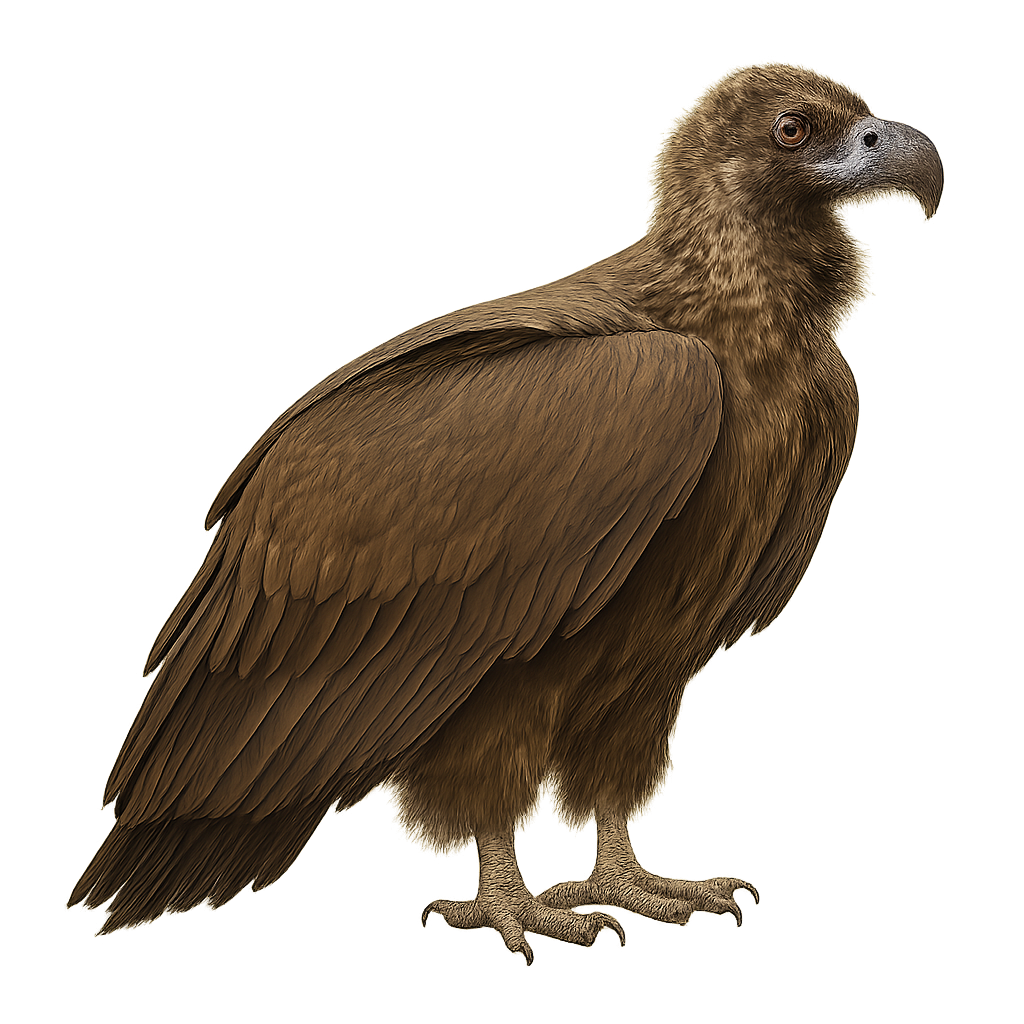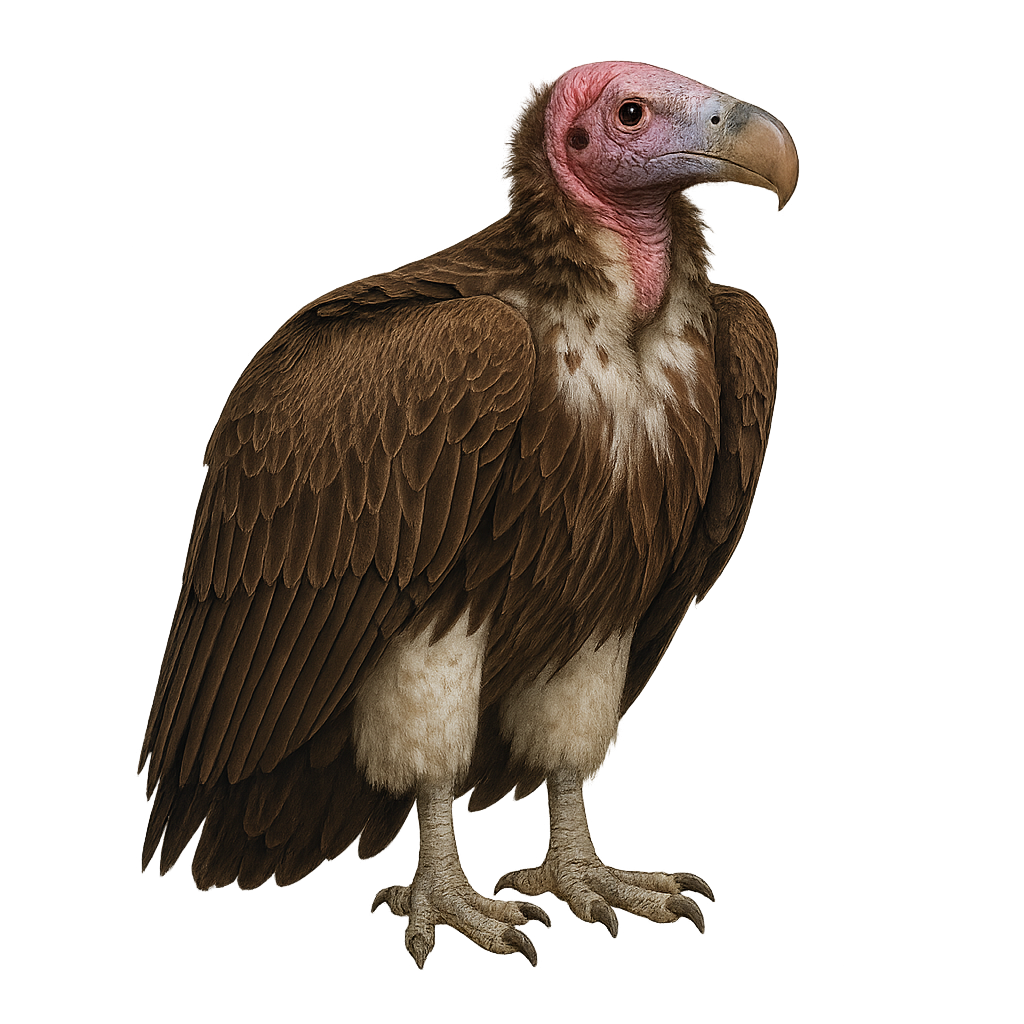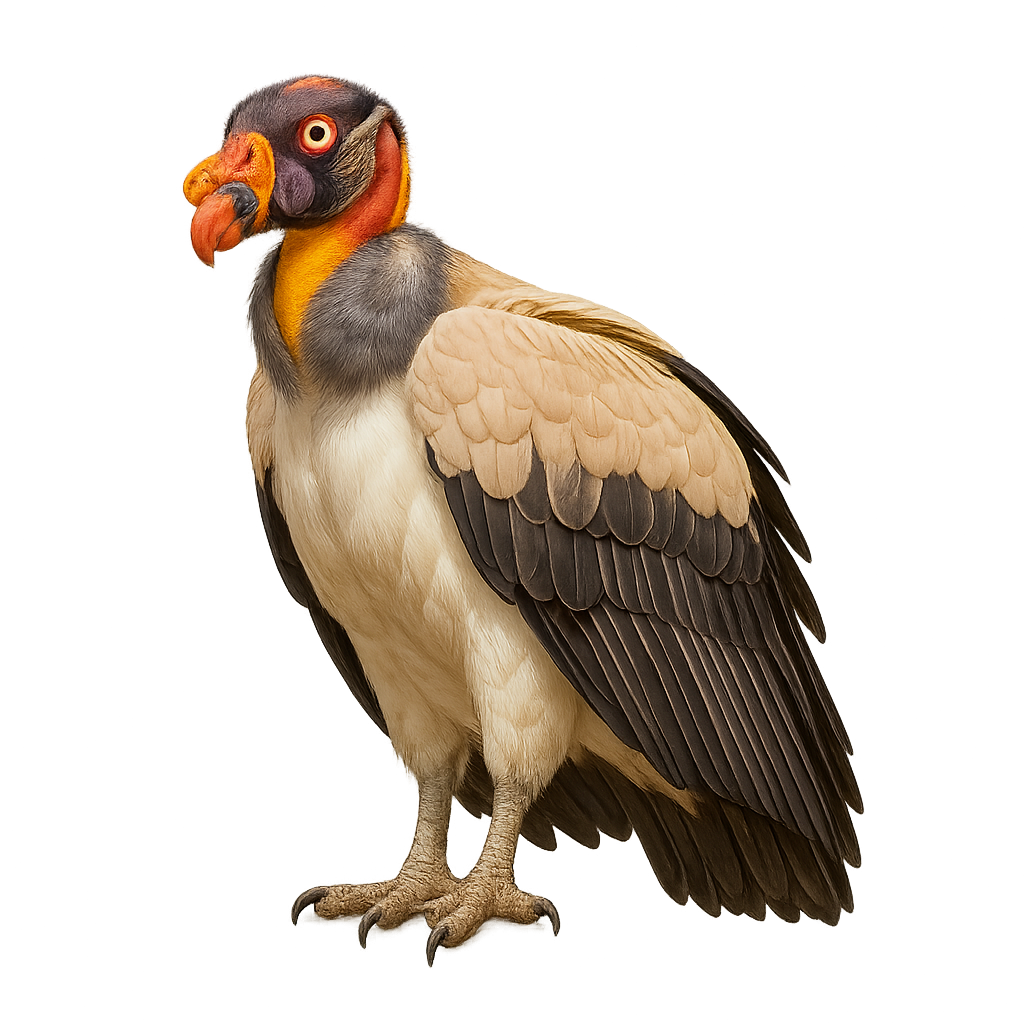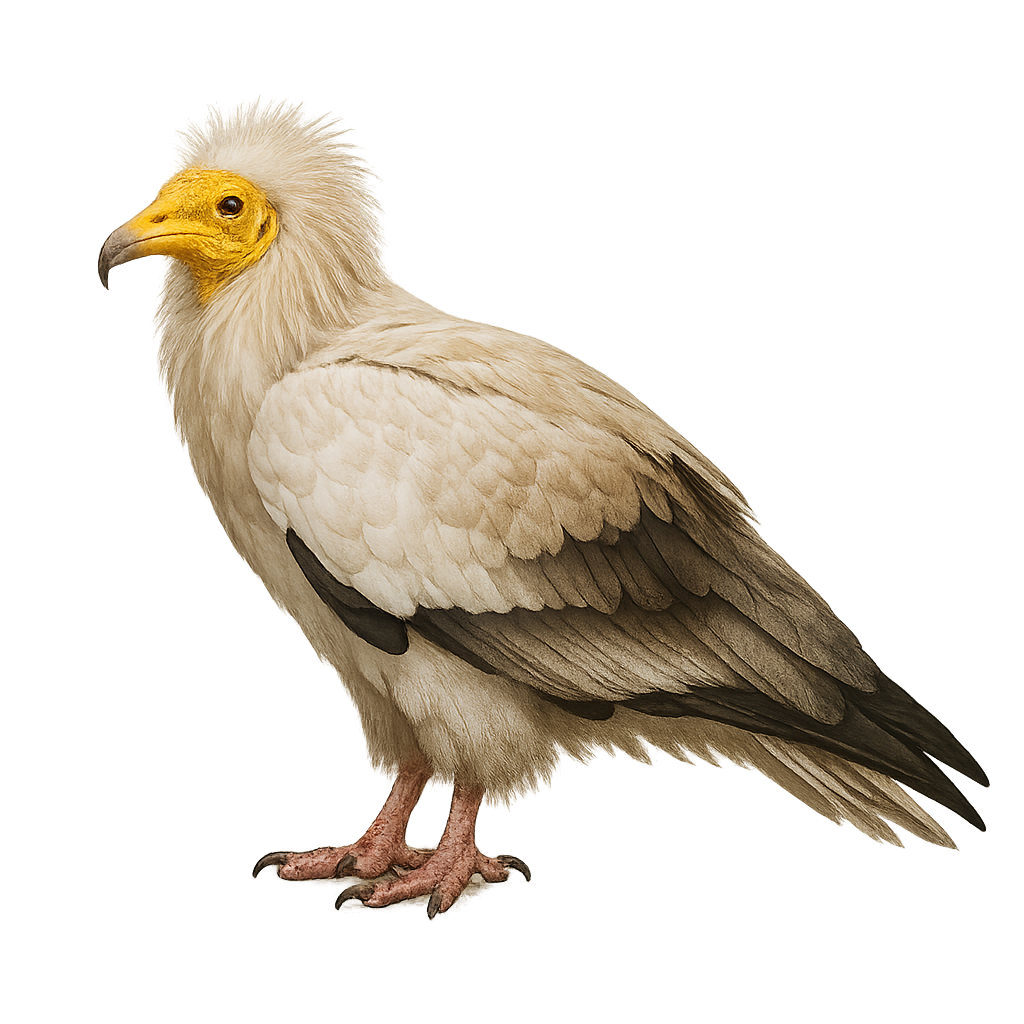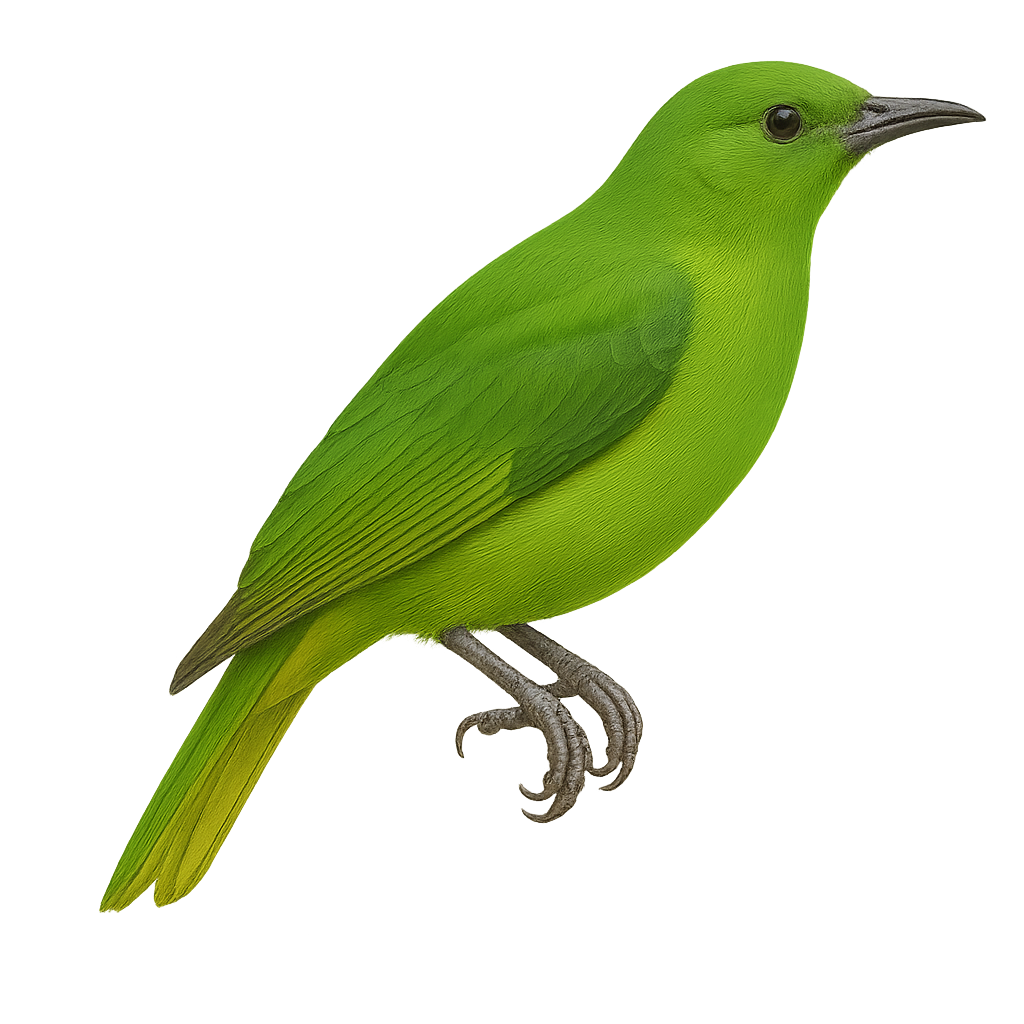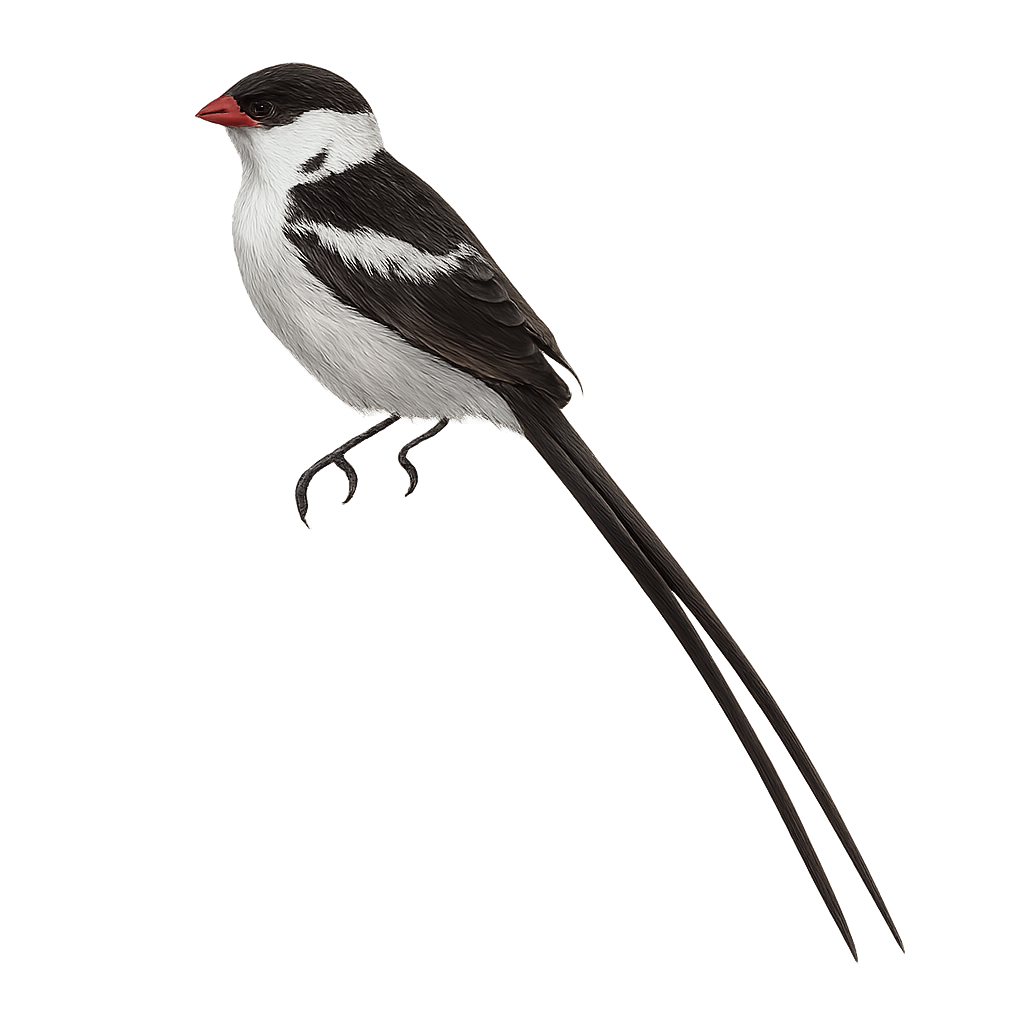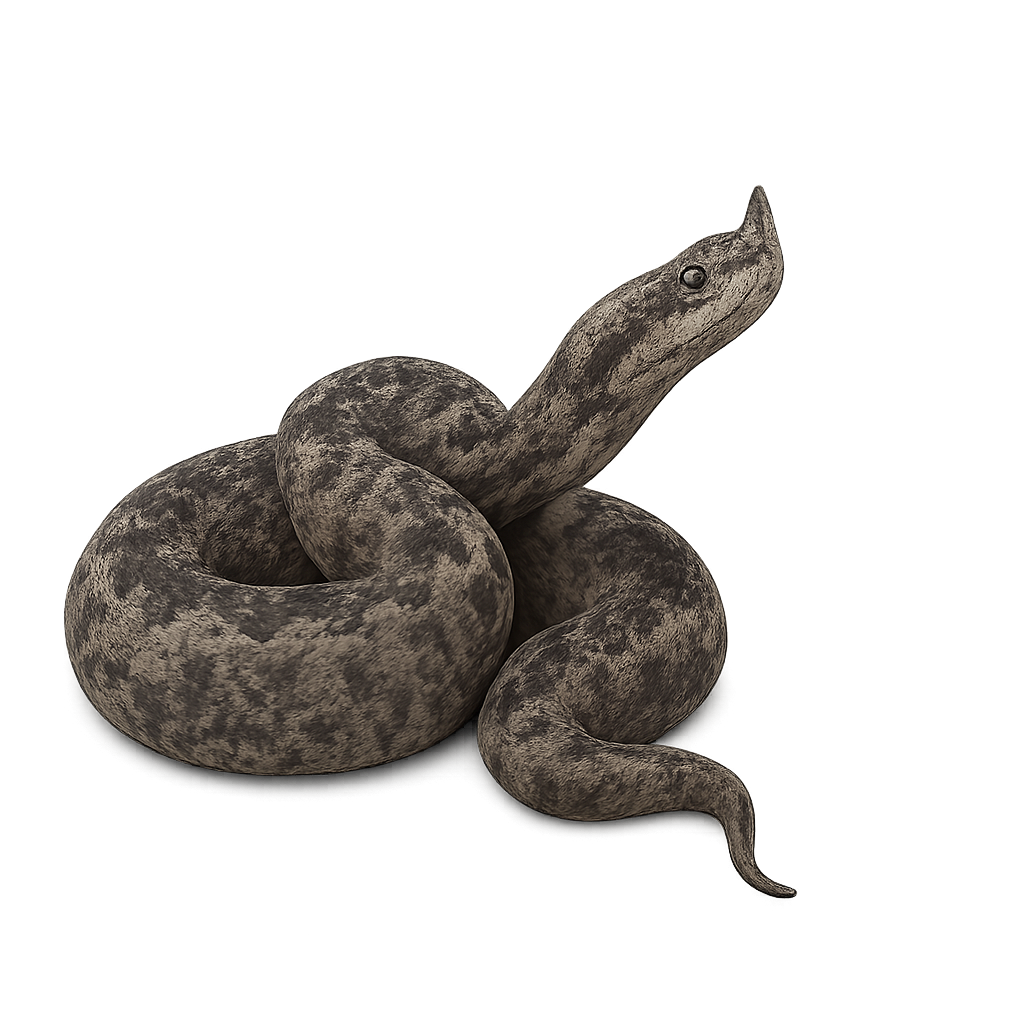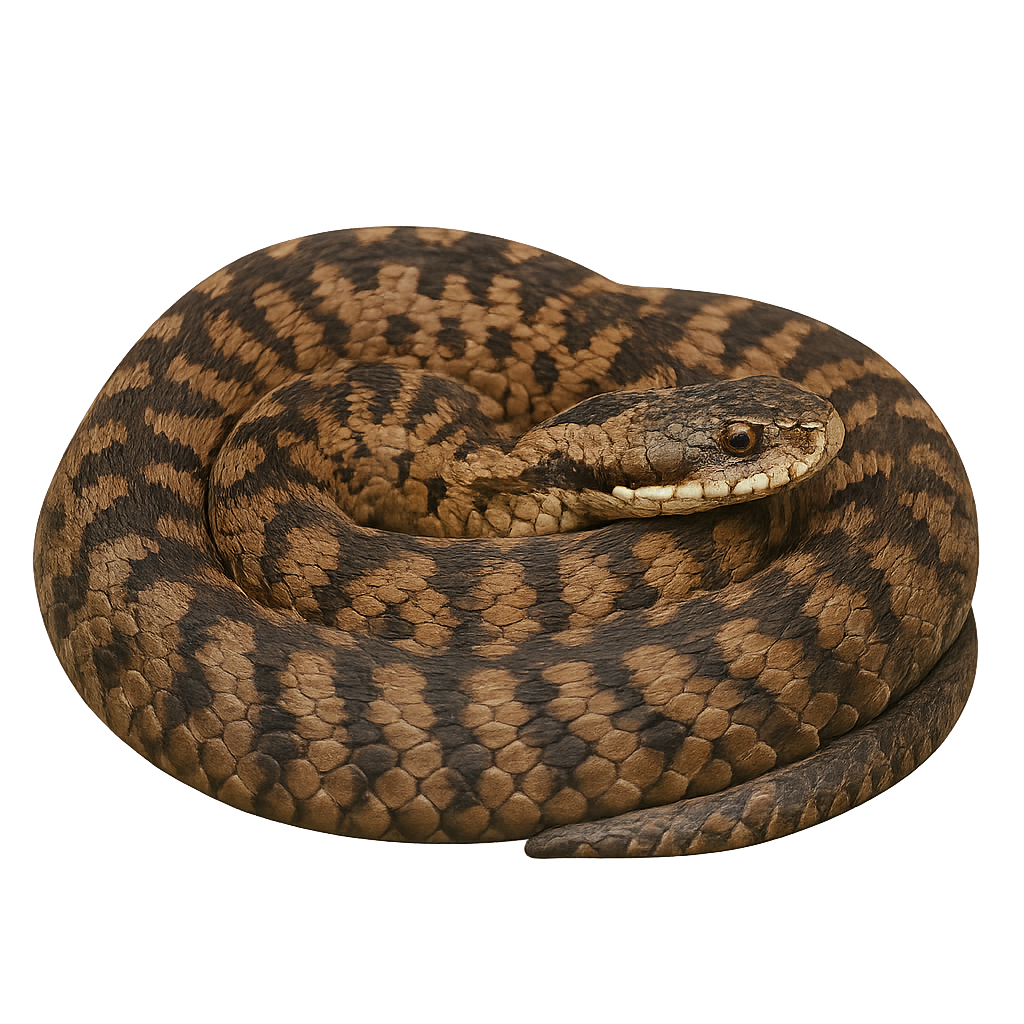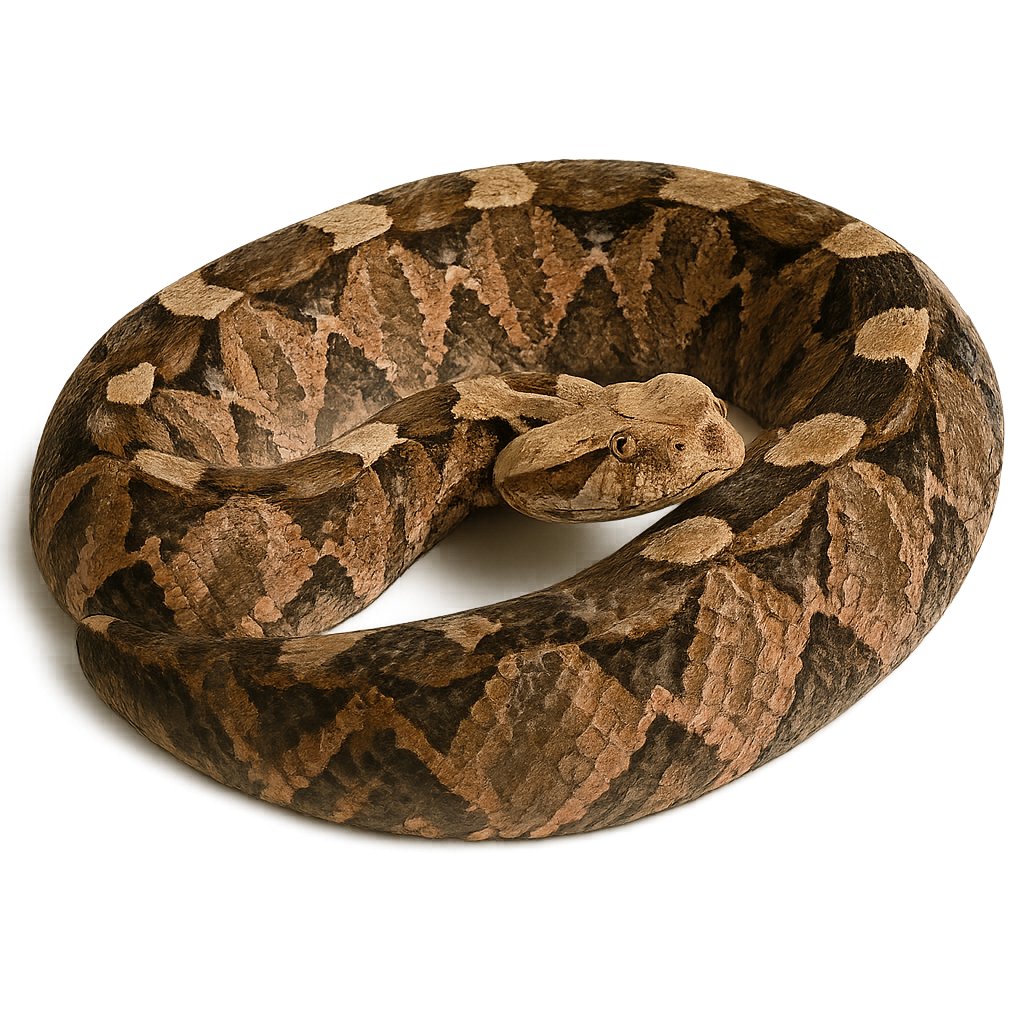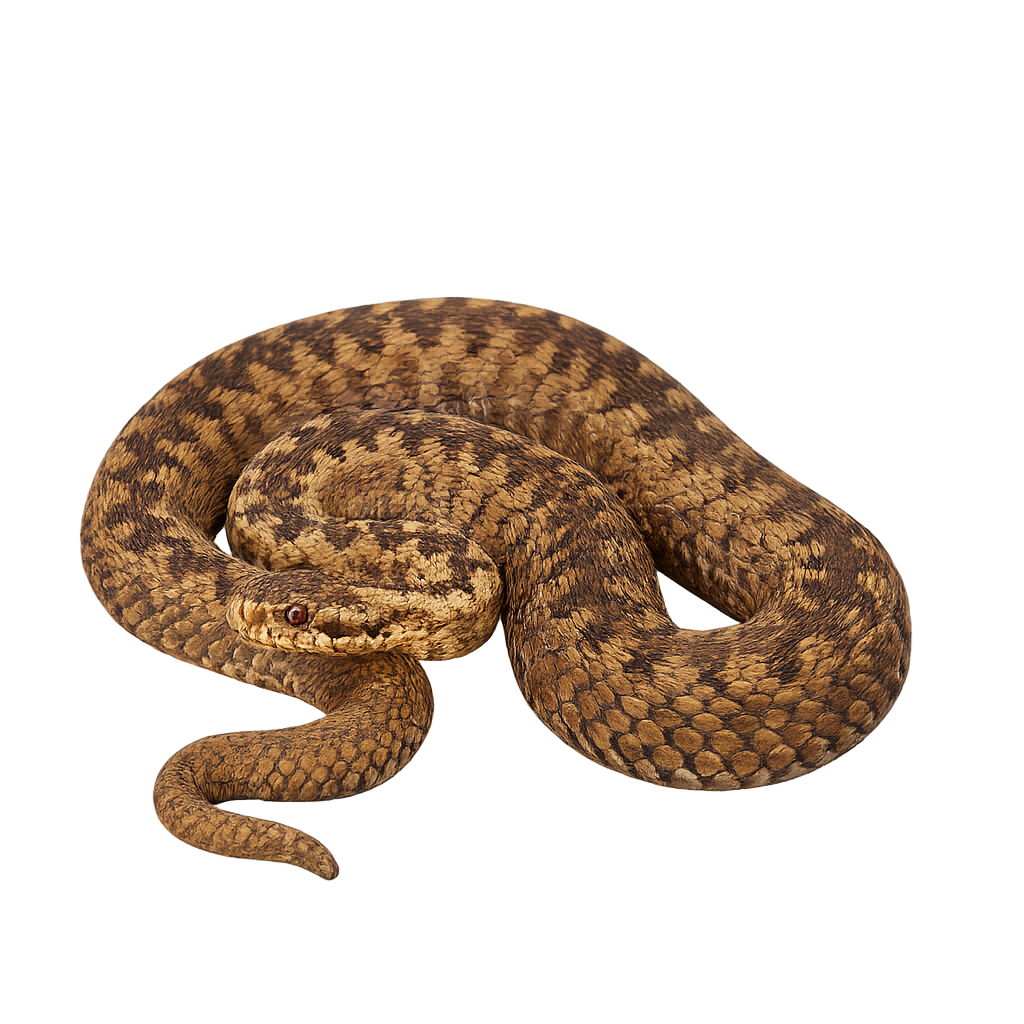The Brown-headed Cowbird, Molothrus ater, is a passerine bird from the Icteridae family, native to North America. This bird is easily recognizable by its chocolate-brown head contrasting with its glossy black body in males, while females have a duller, grayish-brown plumage. The Brown-headed Cowbird is known for its brood parasitism behavior, laying its eggs in the nests of other bird species, which can negatively impact host populations. It inhabits various environments, including grasslands, agricultural areas, and forest edges. Although often considered a nuisance by birdwatchers, it plays a role in ecological balance by controlling insect populations.
The Black-headed Lapwing, Vanellus tectus, is an elegant and distinctive bird, easily recognizable by its black head contrasting with its grey and white body. It also sports a black crest on its head and broad wings with black and white patterns. This bird is primarily found in the dry savannas and open grasslands of sub-Saharan Africa. It is often seen in small groups, feeding on insects and small invertebrates. The Black-headed Lapwing is known for its piercing calls and territorial behavior, especially during the breeding season. Although its habitat is threatened by agricultural expansion, it is currently classified as of least concern by the IUCN.
The crowned lapwing, or Vanellus coronatus, is an elegant and distinctive bird, easily recognizable by its black crown bordered with white on its head. It primarily inhabits the savannas and open grasslands of sub-Saharan Africa. This medium-sized bird, measuring about 30 cm in length, has a brown-grey plumage with white wings and tail, contrasting with its bright red legs. The crowned lapwing is often seen in small groups, feeding on insects and small invertebrates. Its behavior is generally tolerant towards humans, but it can become suspicious if approached too closely to its nest. It is known for its loud calls, especially when defending its territory.
The Pied Lapwing, or Hoploxypterus cayanus, is an elegant and distinctive bird primarily found in South America. It is characterized by its striking black and white plumage, with a black head, grey back, and white belly. Its long red legs and black bill add to its unique appearance. This bird prefers open habitats such as riverbanks, sandy beaches, and marshes. It is often seen in small groups or pairs, feeding on insects and small invertebrates. Although generally discreet, the Pied Lapwing can become noisy and aggressive when defending its territory or young. Its ability to adapt to various environments allows it to thrive in regions ranging from sea level to moderate altitudes.
The Northern Lapwing is a medium-sized bird found primarily in grasslands, fields, and wetlands across Europe, Western Asia, and the Middle East. It typically measures about 28 to 32 cm in length and weighs between 150 and 200 g. Its plumage is primarily black and white, with a distinctive crest on its head and a white belly. The Northern Lapwing is a ground-dwelling bird that primarily feeds on insects, worms, and other small invertebrates found in the soil. It is also known for its ground nesting behaviors, often in colonies. While its population remains stable in some areas, the Northern Lapwing is threatened by habitat loss due to intensive agriculture and land degradation.
The Sociable Lapwing, Vanellus gregarius, is a medium-sized migratory bird belonging to the Charadriidae family. It is distinguished by its elegant plumage, with a brown back, white belly, and a head adorned with black and white patterns. The wings are long and pointed, adapted for its long migratory flights. This bird primarily inhabits steppes and open grasslands, where it feeds on insects, seeds, and small invertebrates. Unfortunately, the Sociable Lapwing is critically endangered, mainly due to habitat loss and hunting. Conservation efforts are essential to ensure the survival of this unique and fascinating species.
The Southern Lapwing, or Vanellus chilensis, is a striking bird from the Charadriidae family, easily identified by its grey and white plumage, black wings, and distinctive call. It is commonly found in open grasslands, wetlands, and agricultural fields across South America. This bird is notably territorial, often defending its space against intruders, including humans. It primarily feeds on insects, worms, and small invertebrates by pecking at the ground. The Southern Lapwing is also known for its distraction displays, feigning injury to lure predators away from its nest.
The vaquita is a small porpoise (1.3–1.5 m, 40–60 kg) endemic to the Upper Gulf of California, with pale grey-blue skin and rounded head. Critically endangered, it uses echolocation to hunt fish and shrimp in turbid, shallow waters (<30 m). Fewer than 10 remain due to bycatch in gillnets and illegal fishing.
The Nile Monitor is a large reptile species native to Africa, particularly found in sub-Saharan regions. It is easily recognized by its impressive size, long and powerful body, and smooth scales. This monitor is semi-aquatic and is commonly found near rivers, lakes, and swamps, where it feeds on fish, amphibians, birds, and even small mammals. Highly agile, it is also capable of swimming and climbing with ease. The Nile Monitor is known for its territorial nature and sometimes aggressive behaviors, especially during the breeding season.
The Coracopsis vasa, commonly known as the Vasa Parrot, is a parrot endemic to Madagascar. It is notable for its blackish plumage, which turns brownish during the breeding season. This medium-sized parrot, measuring about 50 cm, has a strong beak and a relatively long tail. Its call is harsh and distinctive, often heard in the dry and humid forests of the island. The Vasa is a social bird, frequently observed in noisy groups. It primarily feeds on seeds, fruits, and flowers. Its ability to adapt to various habitats, from forests to savannas, makes it a resilient species. However, deforestation and capture for the pet trade threaten its population.
The White-headed Vulture, Trigonoceps occipitalis, is a striking bird of prey found in sub-Saharan Africa. It is easily recognizable by its white head contrasting with its dark body and broad wings. This vulture plays a vital role in the ecosystem by cleaning up carcasses, thus preventing the spread of diseases. It is often seen alone or in small groups, soaring in search of food. Unfortunately, it is threatened by habitat loss and poisoning. Conservation efforts are crucial to ensure its survival. Its population is declining, making it a concern for ecologists.
The African white-backed vulture, or Gyps africanus, is a large scavenging bird found primarily in sub-Saharan Africa. It is identifiable by its light brown plumage and distinctive white back. This vulture plays a crucial role in the ecosystem by removing carcasses and preventing the spread of diseases. Unfortunately, it is threatened by habitat loss, poisoning, and poaching. African vultures live in colonies and are often seen circling in the sky in search of food. Their wingspan can reach up to 2.3 meters, allowing them to cover large distances in search of carcasses.
The Cape Vulture, or Gyps coprotheres, is a large scavenging bird native to southern Africa. It is characterized by its bald head and neck, which are well-suited to its carrion-based diet. Its plumage is mostly beige with darker tones on the wings. This vulture plays a vital role in the ecosystem by disposing of carcasses, thus helping to prevent the spread of diseases. It nests in colonies on cliffs, usually laying a single egg per year. Unfortunately, this species is threatened by habitat loss, poisoning, and collisions with human structures. Conservation efforts are underway to protect and restore its populations.
The Himalayan Vulture, Gyps himalayensis, is a magnificent scavenger bird found in the high altitudes of the Himalayas. With a wingspan reaching up to 3 meters, it is one of the largest vultures in the world. Its plumage is primarily light brown with darker shades on the wings and tail. The head and neck are covered with white down, giving it a majestic appearance. This vulture plays a crucial role in the ecosystem by cleaning up carcasses, helping to prevent the spread of diseases. It is often seen soaring in circles in the sky, using thermal currents to glide effortlessly over long distances.
The Rüppell's vulture is a large carrion-feeding raptor, 85–95 cm tall with a wingspan of 230–265 cm, featuring dark brown plumage and a pale bare head. It inhabits mountain cliffs and savannas of East and Central Africa, feeding mainly on large mammal carcasses. During breeding, it nests in dense colonies on cliff ledges, and pairs sometimes perform group display flights above their nests.
The Griffon Vulture is a large bird of prey found primarily in the mountains, hills, and rocky areas of Europe, Asia, and North Africa. It typically measures between 93 and 110 cm in length, with a wingspan of 2.5 to 2.8 meters, and weighs between 6 and 12 kg. Its plumage is mainly light brown, with white feathers around its neck and head, and a large area of bare skin on the neck. The Griffon Vulture is a scavenger, primarily feeding on animal carcasses. It plays a crucial role in the ecosystem by cleaning up carcasses and preventing the spread of diseases. While its population has declined in some regions, the Griffon Vulture benefits from conservation programs, but it remains threatened by habitat loss, illegal hunting, and poisoning.
The Monk Vulture is a large bird of prey found primarily in the mountains of Eastern Europe, Asia Minor, and Central Asia, with populations in Spain, Bulgaria, and Greece. It typically measures between 80 and 100 cm in length, with a wingspan of 2.3 to 2.8 meters, and weighs between 7 and 12 kg. Its plumage is mainly dark brown, with a bare head, distinguishing it from other vultures. The Monk Vulture is a scavenger, primarily feeding on animal carcasses, and plays a crucial ecological role in helping to remove carcasses and prevent the spread of diseases. While it is protected in many regions, it remains threatened by habitat loss, poaching, and poisoning.
The Lappet-faced Vulture, Torgos tracheliotos, is a large scavenging bird native to Africa, easily identifiable by its bare head and distinctive skin folds around the neck. With a wingspan reaching up to 2.9 meters, it is one of the largest African vultures. Its plumage is primarily dark brown, contrasting with its pale pink head. It plays a crucial role in the ecosystem by cleaning up carcasses, which helps prevent the spread of diseases. This vulture prefers open savannas, semi-deserts, and arid regions, where it can easily spot its prey. Unfortunately, it is threatened by habitat loss, poisoning, and illegal hunting.
The King vulture is a large raptor from the Cathartidae family, recognizable by its bare red head and dark plumage. This vulture, which inhabits mainly the forests and savannas of Central and South America, primarily feeds on carrion, which it finds thanks to its excellent sense of sight and smell. It plays an essential ecological role in cleaning ecosystems. Despite its imposing size, it is often seen flying alone or in small groups. While protected, it is threatened by habitat loss and poisons used in certain hunting practices.
The Egyptian Vulture, or Neophron percnopterus, is a small vulture from the Accipitridae family. It is easily recognizable by its white plumage contrasted with black flight feathers and its bare yellow face. This scavenging raptor is often seen soaring in search of carcasses. It sometimes uses tools, like stones, to break ostrich eggs, showcasing its intelligence. It frequents open habitats such as steppes, deserts, and mountains, often nesting on cliffs. Although it is a migratory bird, some populations are sedentary. Unfortunately, this vulture is threatened by habitat loss and accidental poisoning.
The Eurasian greenfinch is a small passerine bird found primarily in gardens, hedgerows, and open woodlands across Europe, Asia, and North Africa. It is distinguished by its bright green and yellow plumage, as well as its distinctive song. This small bird primarily feeds on seeds, which it finds in grasses, bushes, or on the ground. It is also known for its ability to emit powerful and clear sounds, often heard during its breeding season.
The Yellow-winged Leafbird, or Chloropsis flavipennis, is a medium-sized bird, primarily green with distinct yellow wings. It inhabits tropical and subtropical forests, preferring dense, humid areas. Its vibrant plumage makes it difficult to spot in the canopy, but its melodious song often reveals its presence. It primarily feeds on fruits, nectar, and insects, playing a crucial role in pollination and seed dispersal. Although generally solitary, it can sometimes be seen in small family groups. Its ability to adapt to various forest habitats makes it a resilient species, although deforestation poses an increasing threat to its survival.
The Golden-fronted Leafbird, Chloropsis aurifrons, is a vibrant and fascinating bird native to the tropical forests of Southeast Asia. It is distinguished by its bright green plumage, golden head, and black mask around the eyes. Measuring about 17 to 20 cm, this bird has a slender, slightly curved beak, perfect for feeding on nectar, fruits, and insects. Males and females have similar colors, although females are slightly duller. The Golden-fronted Leafbird is often seen in small groups, moving nimbly through dense foliage. It is known for its melodious and varied song, which resonates in the forests it inhabits.
The Paradise Whydah is a striking bird known for its long tail, which can be three times the length of its body, especially in males during the breeding season. This passerine, native to sub-Saharan Africa, is often seen in savannas and open woodlands. Its plumage is mainly black with metallic sheen, while the belly is pure white. Males display a spectacular tail during the mating season, which they lose afterward. Females are more discreet, with brown and streaked patterns. The Paradise Whydah is a brood parasite, laying its eggs in the nests of other birds, particularly waxbills.
The Pin-tailed Whydah, Vidua macroura, is a bird from the Viduidae family, recognizable by the male's long, slender tail. Native to sub-Saharan Africa, it is often found in savannas, grasslands, and agricultural areas. The male displays distinctive black and white plumage, while the female is more subdued with brownish tones. This bird is a brood parasite, laying its eggs in the nests of other species, primarily waxbills. The Pin-tailed Whydah is known for its spectacular courtship displays, where the male showcases his tail to attract females. Although not very shy, it remains cautious around humans.
The Vicuna is a wild camelid native to the high plateaus of the Andes in South America. This small animal with silky, lightweight fur is closely related to the llama and alpaca, but unlike these, the vicuna is a wild animal. It lives in the mountainous regions of Argentina, Chile, Bolivia, and Peru, at high altitudes, often above 3,000 meters. The vicuna primarily feeds on herbaceous vegetation, especially alpine grasses. Its wool, soft and fine, is highly sought after, but it is protected by strict regulations. It is a timid animal, living in small groups and often moving over great distances in search of food.
The horned viper, scientifically known as Vipera ammodytes, is a venomous snake found primarily in the Balkans and parts of Southeast Europe. It is distinguished by its triangular head and the unique horn-like structure on its snout. Its coloration ranges from gray to brown, with zigzag patterns along its back, providing excellent camouflage in its natural rocky and dry habitats. This species is typically found at altitudes from 0 to 2000 meters. Although its venom can be dangerous to humans, bites are rare and usually occur only when the snake feels threatened.
The Asp Viper is a venomous snake species found primarily in rocky areas, meadows, and forests of Southern Europe, notably in France, Spain, Italy, and Switzerland. It typically measures between 60 and 80 cm in length, although some individuals can reach up to 1 meter. Its color ranges from gray to brown, with a zigzag pattern on its back and a distinct triangular head. The Asp Viper primarily feeds on small mammals, lizards, and birds. While venomous, its poison is generally harmless to humans, though bites do require medical attention. It is a protected species in many regions but is threatened by habitat loss and human persecution.
The Gaboon viper, Bitis gabonica, is a venomous snake known for its impressive size and striking appearance. It can grow up to two meters long and is renowned for its intricate color patterns that allow it to blend seamlessly into the leaf litter of its forest habitat. Its fangs are among the longest of any venomous snake, and its venom can be deadly to humans. Primarily nocturnal, it preys on small mammals, birds, and occasionally reptiles. Although feared, it is generally not aggressive and prefers to avoid confrontation. Its presence is an indicator of healthy African forest ecosystems.
The Common European Adder is a medium-sized venomous snake, typically measuring between 60 and 90 cm in length. It exhibits variable coloration, ranging from brown to gray, with a darker zigzag dorsal stripe. Melanistic individuals are entirely black. This species is widely distributed across Europe and Asia, from the United Kingdom to the Pacific coast of Russia, and up to the Arctic Circle. It inhabits various environments, including forests, heathlands, meadows, and wetlands. The adder is diurnal and feeds primarily on small mammals, amphibians, lizards, and birds. It is ovoviviparous, giving birth to 3 to 20 live young in late summer or early autumn. Although its venom can be dangerous, bites are rare and seldom fatal. Listed as Least Concern by the IUCN, it is protected in several European countries.


